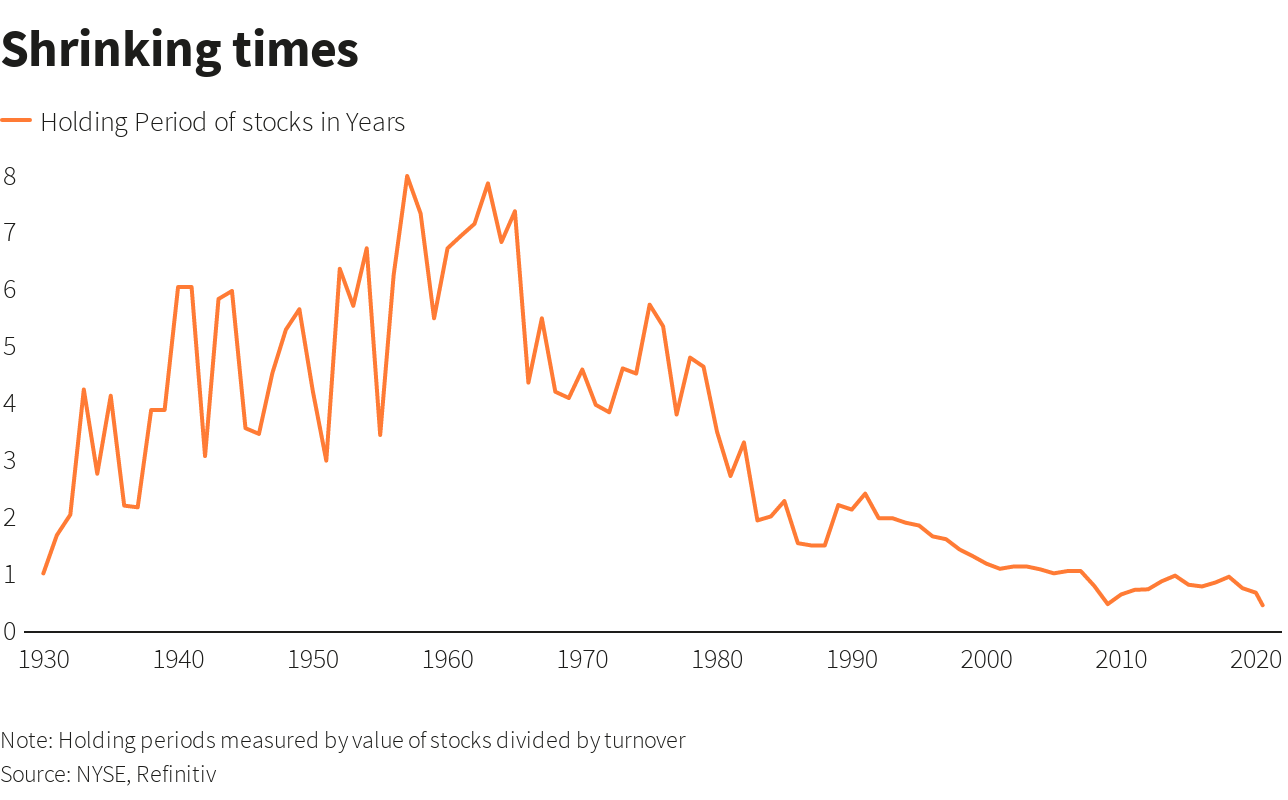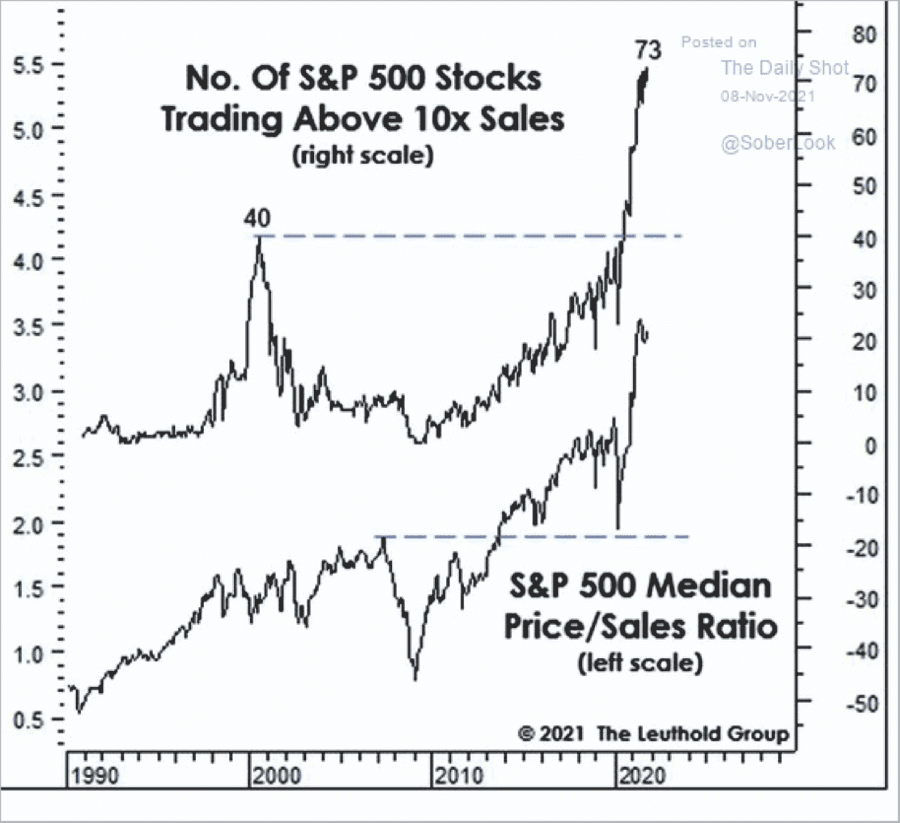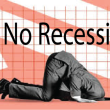by Lance Roberts, RIA
Buying stocks is easy; the hard part is knowing when to sell. I read an excellent article recently by Michael Batnick on his trials and tribulations in owning a stock. To wit:
“Now let’s talk about a company that I did care enough about to buy and lost money on. What do you call a stock that was down 58% and then fell 27% in a day? Zillow.”
The primary tenant of investing is that if you are going to put capital at “risk” in a “speculative transaction,” be prepared to lose. We have all been there.
However, where I partially disagree with Michael’s analysis is this:
“‘Buy low, sell high’ is one of the most garbage pieces of financial ‘wisdom.’ Most of the time when you buy low, you end up selling lower. Jon Boorman taught me this a long time ago but sometimes you have to relearn what you already know. Jon wrote, ‘If you want to own the strongest stocks, buy the strongest stocks. Buy something that’s already doing what you want it to. Going up.”’
Like most “financial wisdom” that has survived the ages, it gets lost on young investors who have never lived through an actual bear market. More importantly, there is a vast difference between “momentum” and “fundamental” investing.
There Is No Long-Term
There is a distinction that I must make here. Michael’s quote of Jon Boorman talks about “momentum” investing, or rather, short-term trading. Here is his precise quote.
“Buying a stock at x+1 can be a lower risk trade than buying it today at x. Forget buy low, sell high. When something is falling, it’s more likely to keep falling than it is to reverse, and vice versa. It’s called momentum, and along with value, it’s one of the most empirically proven anomalies to academic theory that the Nobel Prize winners wish would go away. Note to self: Look into buying value stocks that show upward momentum.“
That is precisely correct. In the short-term, “value” has little relevance to what positions you should buy or sell. It is only momentum, the direction of the price, that matters. As discussed in “Picking Up Pennies,” no one is a long-term investor.
Managing money, either “professionally” or “individually,” is a complicated game in the long term. In the short term, particularly amid a speculative mania, it seems exceedingly easy. However, as is the case with every bull market, a strongly advancing market covers up the many investing mistakes investors make. It is the ensuing bear market that reveals them in the most brutal and unforgiving of outcomes.
There is a clear advantage to providing risk management to portfolios over time. The problem is that most individuals cannot manage their own money because of “short-termism.” (As shown by shrinking holding periods)”

Buying Stocks Is Easy, Especially In A Bull Market
During a bull market, which is the only market many investors have ever navigated, buying stocks is easy. As noted above, a strongly trending bull market covers up investing mistakes of buying poor quality companies. A great example is a company with sales of 3.9 billion and $0 of income, trading at 288x trailing earnings.
Yep, that’s Zillow (Z), and those numbers are after a near 70% decline from the peak.
But it isn’t just Zilliow. According to Leuthold Group, 73 companies in the S&P are currently trading at 10x sales with a median price-to-sales ratio for the entire index above 3x.

Why should 10x sales concern you? Such gets easily dismissed without context, mainly due to a speculative bull market. However, once you view 10x sales with a basis in reality, the concern becomes more evident.
“At 10-times revenues, to give you a 10-year payback, I have to pay you 100% of revenues for 10-straight years in dividends. That assumes I can get that by my shareholders. It also assumes I have zero cost of goods sold, which is very hard for a computer company.
That assumes zero expenses, which is hard with 39,000 employees. That assumes I pay no taxes, which is very hard. And that expects you pay no taxes on your dividends, which is kind of illegal. And that assumes with zero R&D for the next 10-years, I can maintain the current revenue run rate.
Do you realize how ridiculous those underlying assumptions are? You don’t need any transparency. You don’t need any footnotes.
What were you thinking?” – Scott McNealy, then CEO of Sun Microsystems, 2000.
Buying stocks is easy in a market that only seems to go up. However, investors’ lack of “experience” provides no basis for a “sell discipline” when things go wrong.
Having A Sell Discipline Is Hard
“If you are going to buy a stock on the way down, you must have a long time horizon. Don’t expect that a stock will turn around just because you bought it. The other thing you must have, and this is critical, is risk management because buying stocks on the way down is a risky endeavor. That can come in two forms. Either have some sort of level where you say I’m out, or, put on a small enough position such that if you’re really wrong, like I was, then it won’t hurt too bad.” – M. Batnick
Selling stocks is the most difficult challenge for any investor. That single decision becomes plagued with a host of emotional biases.
- What if I am wrong and the stock keeps going up?
- If I sell now, I am locking in my loss.
- If I sell the position, what will I do with the money?
- I read an article or listened to someone that said the company is still good so that it might go back up.
- I will sell it when I get back to even.
- If I double down and the stock goes up, I can get out.
These are all rationalizations to avoid one thing – the admission that you made a wrong decision. It is purely an emotional bias that all investors must deal with.
As Howard Marks once stated:
“If I ask you what’s the risk in investing, you would answer the risk of losing money. But there actually are two risks in investing: One is to lose money, and the other is to miss an opportunity. You can eliminate either one, but you can’t eliminate both at the same time. So the question is how you’re going to position yourself versus these two risks: straight down the middle, more aggressive or more defensive.
I think of it like a comedy movie where a guy is considering some activity. On his right shoulder is sitting an angel in a white robe. He says: ‘No, don’t do it! It’s not prudent, it’s not a good idea, it’s not proper and you’ll get in trouble’.
On the other shoulder is the devil in a red robe with his pitchfork. He whispers: ‘Do it, you’ll get rich’. In the end, the devil usually wins.
Caution, maturity and doing the right thing are old-fashioned ideas. And when they do battle against the desire to get rich, other than in panic times the desire to get rich usually wins. That’s why bubbles are created and frauds like Bernie Madoff get money.
How do you avoid getting trapped by the devil?
I’ve been in this business for over forty-five years now, so I’ve had a lot of experience. In addition, I am not a very emotional person. In fact, almost all the great investors I know are unemotional. If you’re emotional then you’ll buy at the top when everybody is euphoric and prices are high. Also, you’ll sell at the bottom when everybody is depressed and prices are low. You’ll be like everybody else and you will always do the wrong thing at the extremes.
Therefore, unemotionalism is one of the most important criteria for being a successful investor. And if you can’t be unemotional you should not invest your own money, period. Most great investors practice something called contrarianism. It consists of doing the right thing at the extremes which is the contrary of what everybody else is doing. So unemtionalism is one of the basic requirements for contrarianism.”
This is why being unemotional is tough to do when it comes to your money.
Emotions of “greed” and “fear” cause individuals to take on too much exposure or worry risk is too high. Ultimately, emotion-based arguments are inherently wrong and lead individuals into decisions that harm their financial health.
7 Rules To Manage Risk When Buying Stocks, or Selling Them
Here are the rules for managing risk– they are not unique or new. They are time-tested and successful investor approved. If you follow them, you succeed – if you don’t, you won’t.
1) Sell Losers Short: Let Winners Run
It seems like a simple thing to do, but the average investor sells their winners and keeps their losers.
2) Buy Stocks Cheap And Sell Expensive
You haggle, negotiate, and shop extensively for the best deals on cars and flat-screen televisions. However, you will pay any price for a stock because someone on TV told you to. Insist on making investments when you get a “good deal.” If it isn’t – it isn’t. So, don’t try and come up with an excuse to justify overpaying for an investment. In the long run, overpaying will end in misery.
3) This Time Is Never Different
Our psychological makeup wants us to always hope for the best. However, this time is never different from the past. History may not repeat exactly, but it often rhymes exceptionally well.
4) Be Patient
As with item number 2, there is never a rush to invest, and there is NOTHING WRONG with sitting on cash until a good deal, a real bargain, comes along. Being patient is not only a virtue; it is an excellent way to keep yourself out of trouble.
5) Turn Off The Television
Any good investment is NEVER dictated by day to day movements of the market, which are nothing more than noise. Suppose you have done your homework, made a good investment at a reasonable price, and have confirmed your analysis to be correct. In that case, the day-to-day market actions will have little, if any, bearing on the longer-term success of your investment. The only thing you achieve by watching the television is increasing your blood pressure.
6) Risk Is Not Equal To Your Return
Taking RISK in an investment or strategy is not equivalent to how much money you will make. It only equates to the permanent loss of capital incurred when you are wrong. Invest conservatively, and grow your money over time with the LEAST amount of risk possible.
7) Go Against The Herd
The populous is generally “correct” in the middle of a move higher in the markets. However, they are seldom correct at major turning points. When everyone agrees on the direction of the market due to any given set of reasons, generally, something else happens. However, this also cedes to points 2) and 4); to buy something cheap or sell something at the best price, you generally buy when everyone is selling and sell when everyone else is buying.
These are the rules. They are simple and impossible to follow for most. However, if you can incorporate them, you will succeed in your investment goals over the long run. You most likely WILL NOT outperform the markets on the way up, but you will not lose as much on the way down. Such is important because it is much easier to replace a lost opportunity in investing. It is impossible to replace lost “time.”
As an investor, your job is to step away from your “emotions” and look objectively at the market. Is it currently dominated by “greed” or “fear?” Your long-term returns will depend significantly on how you answer that question and manage the inherent risk.
“The investor’s chief problem – and even his worst enemy – is likely to be himself.”– Benjamin Graham
Copyright © RIA














